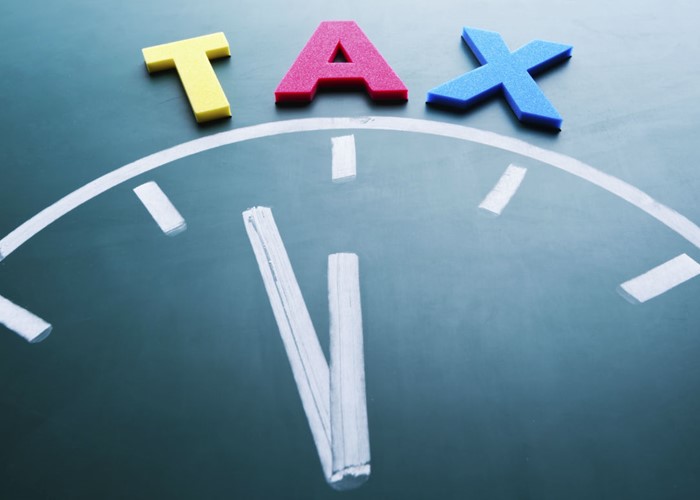Income tax and National Insurance merger: Possible losers

The government is planning to simplify income tax and national insurance. However one group could be set to lose out from the changes...
Two words most of us would rarely put together: tax and simple. And this is probably why the government has a whole office dedicated to coaxing these terms together.
Yes, the Office of Tax Simplification has wasted no time demystifying our approach to tax. Its first publication: an extremely complex 82 page paper recommending the merging of income tax and national insurance (NI). Sigh.
On the back of this report, the government has begun examining the feasibility of integrating the two systems.
However if this does go ahead, one group could suffer.
Difference in rates
Commentators and accountants have pointed out that the self-employed could lose out if a full merger of the two tax systems is pushed through.
This is because national insurance contributions (NICs) for employees and the self-employed are, as it stands, levied differently. The self employed pay class four (percentage) NICs (more on flat-rate NICs later) at 9% on profits between £7,225 a year and £42,475 and 2% on profits past that.
Employees on the other hand pay NICs at 12% on earnings between £7,228 a year (£139 per week) and £42,484 a year (£817 per week) and 2% on earnings above that level.
Income tax is obviously levied for both employees and the self-employed at a blanket rate.
So while income tax is identical for employees and the self-employed, NI is different, with the self employed paying less (as a percentage of their income anyway). This could throw up problems, depending on how the two taxes are integrated.
For example, if a full merger goes through and a ‘mega-tax’ of 32% is born, the self-employed who are currently paying NICs at a 9% and income tax at 20%, would lose out.
But this isn’t the only potential problem for self-employed workers.
Qualifying years
NI contributes towards your State Pension. However, to be eligible for the full basic State Pension (currently £102.15 a week) you’ll need to have built up sufficient contributions through qualifying years of work or benefits claims.
The self-employed are also eligible for the State Pension. However the class four, percentage contributions do not go towards it. Instead the self-employed pay class two NICs for their State Pension: this is a flat rate of £2.50 a week. That way, the self-employed can keep up their contributions regardless of their profitable income.
An integration of NI and income tax could throw a spanner in the works if this flat rate – and cost-effective option – is scrapped. If a straight percentage ‘mega-tax’ is levied across workers, the self-employed could start to see gaps opening up in their qualifying years. A flat rate would also not take into account possible variations in self-employed income.
Say hypothetically a self-employed person worked seven days a week for a full year, earned a lot of money on a high rate and paid a large amount of NI; but then did not work at all for the next year. Under a solely flat percentage levied profit rate of NI, this would potentially only count as one qualifying year, despite the person having paid over-the-odds due to their abnormally high income in the first year.
But the self-employed aren’t the only people being put at risk by these proposed changes.
More potential losers
Anyone who does not pay NI but still has an income (and hence pays income tax) could also lose out if a tax integration went through. This would include pensioners and those that live off savings.
People who work in more than one job simultaneously could also lose out if one rate was passed across multiple employments.
Consultation
The Treasury has said it will proceed with caution when introducing any amalgamation of NI and income tax. In fact, a full merger is not even on the cards, so don’t expect a 32% ‘mega-tax’ anytime soon. The devil really will be in the detail.
The government has also made assurances that self-employed workers, pensioners and savers will not be adversely affected by any changes. However it seems inevitable that whenever changes like this are pushed through, some groups always suffer.
So is it worth doing?
Political economy
The aim of this merger is to bring more transparency to the tax system and allow people to see just how much they are paying in tax. It comes alongside proposals to give every taxpayer online access to their tax records.
Perhaps I'm being cynical but I suspect lthis might not be the Government's only motive. If NI and income tax are brought in line and the rate of tax for most people is viewed as 32% and not 20%, it’s likely that the public attitude towards government spending will increase in both criticism and hostility. This could bring about a shift in preference across the balance of tax cuts and state spending.
As James Forsyth put it, writing in the Spectator, “this move would be a matter of political economy”.
In other words, the motives, along with the practical steps for this tax change, could be anything but simple.
Your take
Should income tax and national insurance be merged?
Have your say using the comment box below.
Comments
Be the first to comment
Do you want to comment on this article? You need to be signed in for this feature